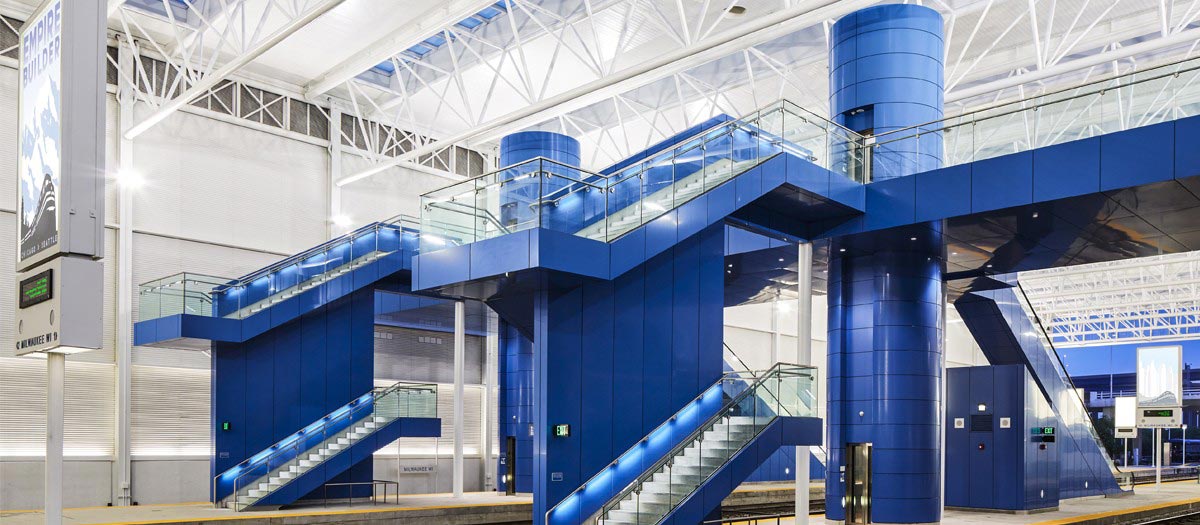




- Commercial
Milwaukee Intermodal Station

Location:
To say that the Milwaukee Intermodal Station needed improvement doesn’t begin to express the deplorable state of the 50-year facility back in 2014. The dark, unwelcoming station showed evidence of its depressing condition at almost every turn, from water leaking onto passengers’ heads, to the ubiquitous rusted steel work, to the chunks of concrete crumbling off walls.
Technically speaking, the project involved removing and replacing the train shed and pedestrian platforms, in addition to constructing new foundations and seven new sets of cast-in-place stairs; installing three new elevators and four new escalators; constructing a new structural steel mezzanine spanning five tracks and three boarding platforms; installing new signage throughout; and providing site utilities services. Various upgrades were needed to meet regulatory requirements, including FRA level boarding conditions, NFPA life safety egress conditions, and ADA standards for accessibility. The concourse features hearing-loop technology, which allows passengers with smart hearing aids to receive announcements in the concourse. Yet another feature is the roof: it is a fabricated 3D tubular truss spanning 121ft, with skylights between the trusses.
All construction was in close proximity to the tracks and could not impede the trains. Adhering to that directive would be the team’s single biggest challenge and would essentially require redefining what it means to schedule a project. On a daily basis, the five tracks passing through the Milwaukee Intermodal Station carried eight passenger trains, in addition to an average of 10 freight trains daily—which arrived sporadically and spontaneously, allowing no more than 20 minutes for the team to react. Additionally, Canadian Pacific Railway required two live tracks for the freight trains at all times and Amtrak needed at least one track.
So, rather than week-by-week, or even day-by-day, this unique construction environment dictated a schedule that could more accurately be called minute-by-minute. Throughout every day—and night—the team had to react swiftly and safely not only to scheduled passenger train arrivals, but to a variety of unpredictable scenarios like late trains, simultaneous arrivals, and those 1-2 mile-long freight trains that passed through.
To meet these unique challenges, teamwork was critical. The team established a flexible, reactive approach that was efficient and systematic, and maintained a safe work environment for all. This involved adjusting— and in some cases suspending—work tasks in areas where train arrival was anticipated. If needed the team reverted to scheduled fall-back tasks away from the track area, when possible, which helped to keep construction moving forward. For passengers disembarking and loading, the team’s priority was to allow a clear and safe path and let Amtrak’s operations continue unhindered.
Today, not only is the transformed Milwaukee Intermodal Station bright, attractive, and welcoming, it improves the public’s access to and from Milwaukee, including travelers with disabilities. The project has invigorated train travel in Milwaukee and sets a standard of excellence for stations around the country to emulate.
Highlighted Service Capabilities:
Pre-construction Planners
Schedule Guardians
Market Experts










